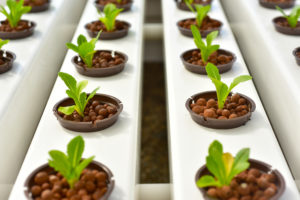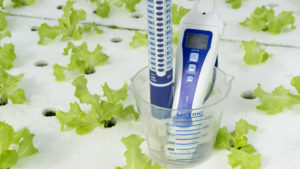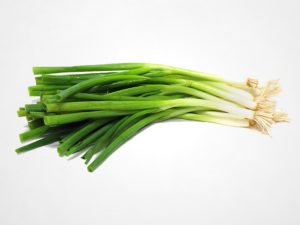Want to grow hydroponic lettuce at home? It’s an ideal plant for hydroponics, and it’s one of the easiest too. Lettuce grows quickly and needs very little extra care. Here’s the complete guide to growing hydroponic lettuce!
Hydroponic Lettuce: An Overview
Before we get into the guide, here’s a look at the main points about growing lettuce:
- Ready for harvest between 4-8 weeks (depending on variety)
- Ideal light- 10 to 14 hours daily
- pH- between 5.5-6.5
- Grows well with fluorescent lights (CFL or T5)
- Ideal for DWC, NFT, and ebb and flow systems
- Has a shallow root system
- Best temperature – approximately 66 degrees
- Temperature above 70-75 F ( 21-23.8 C) degrees may cause bolting
- Vegetative nutrients preferred
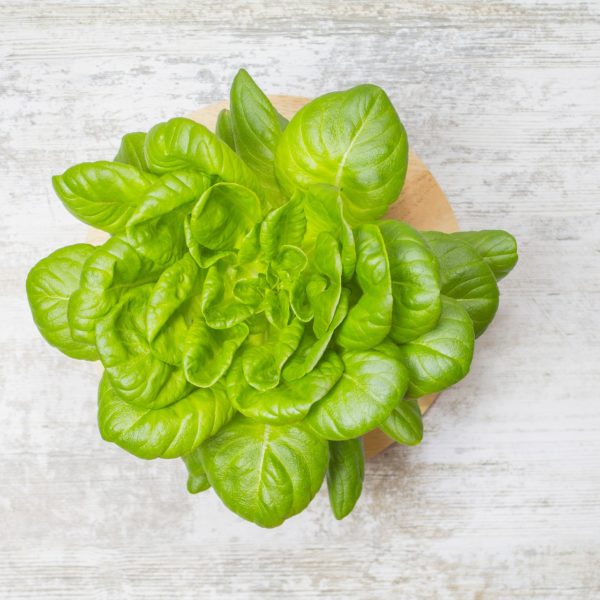
First, Pick Your Variety
There are plenty of types of lettuce to choose from. You will see tight head and loose head lettuce. Tight head lettuce grows in a bunch, with the typical ball shaped cabbage head. The most common is Iceberg lettuce although there are many others. Loose head lettuce grows with more individual (or loose) leaves. An advantage of loose head lettuce is you can pick what you want, and continuously harvest it. Remember, when you grow lettuce in hydroponic systems, you may choose a different variety than you would pick up in the supermarket.
Best loose lettuce varieties
- Oak leaf
- Red fire
- Green Ice
Best tight head lettuce varieties
- Butterhead
- Romaine
- Bibb
- Iceberg
- Summer crisp
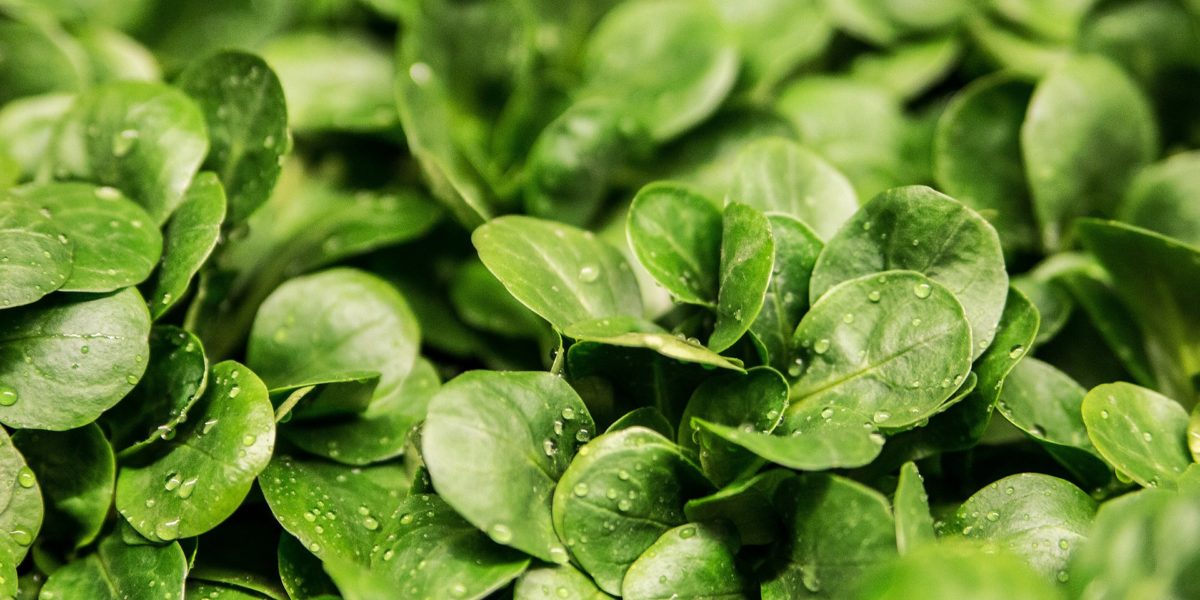
Top Lettuce Choices
Depending on what you’re looking for, different varieties are going to draw your interest. Here are the top hydroponic lettuce varieties, based on their winning traits.
Romaine – A popular salad choice, and a favorite for baby leaves. Romaine leaves are large, with a slightly sweet taste and a rather crisp bite.
Bibb – One of the best varieties if you want to grow mini head lettuce. One of the most common greenhouse varieties behind Butterhead (though Bibb is actually a Butterhead cultivar). Bibb lettuce also has many different cultivars to choose from.
Butterhead – Perhaps the most popular hydroponic and greenhouse lettuce. It has a crisp, buttery, and almost sweet flavor, and keeps well over time. Boston and Bibb varieties are the main Butterhead cultivars.
Iceberg – Undeniably the top pick as a commercial lettuce variety. Iceberg grows medium to large heads and has a crispy texture.
Basic Needs
Lettuce does not need very intense light, and that’s why it is easy to use fluorescent grow lights. It’s not a very fussy crop either, and generally tolerates temperatures between 45 or 50 degrees to 70 degrees Fahrenheit (7.2/10 to 21 Celsius). Some varieties tolerate higher temperatures, although many will bolt if temperatures rise above 70 or 75 degrees Fahrenheit (21-23.8 Celsius). A slightly lower nighttime (lights out) temperature is best.
Lettuce does best with a slightly acidic pH- around 5.5 to 6.5. While it does not need much accommodation when it comes to nutrients, a formula designed for vegetative plants is best. Most varieties do best with 10 to 14 hours of light (under grow lights), so many growers use a 12/12 cycle (12 hours with light, 12 hours without).
The time until harvest depends mostly on which variety you select. While Buttercrisp or Bibb matures within four weeks or so, other varieties, like Iceberg, can take up to eight or nine weeks. Of course, if you want a variety you can keep harvesting while the crop keeps growing, loose lettuce varieties are best. Once they mature, you can take what you want (it’s advised to leave at least 40% of the crop to allow regrowth) and harvest the rest as needed.
Hydroponic lettuce grows best from fresh seeds. Unfortunately, lettuce is one of those crops where the seeds may not keep as well as others. Our best advice – use fresh lettuce seeds, no matter what variety you choose. At the very least, make sure you use seeds intended for this (the current) season.
How to Grow Hydroponic Lettuce (Indoors)
Variety selected? Check.
Hydroponic system ready? Check.
Basic research done? Check-ish, (but that’s why you’re here!).
Ready to grow lettuce in your hydroponic system? Check.
Now, onto growing that awesome hydroponic lettuce (and a new reason to love salads!). Here’s the step by step guide for what you need to do, and how to do it.
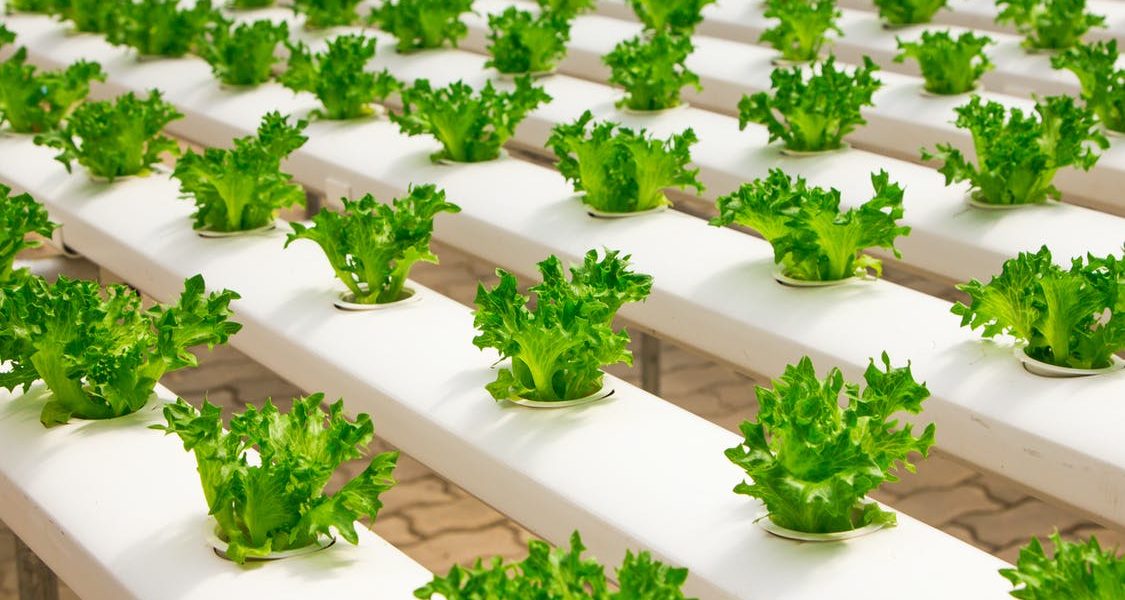
Germinate those seeds!
“Germinating seeds” may only ring the faintest bell if you’re not a regular grower. Basically, germination is when seeds start growing into a sprout. Get a good growing medium for starting plants. Starter cubes (or small cubes of rockwool) are the best way to germinate lettuce seeds. Bonus: they’re easy to transfer to a larger hydroponic system once your plants start rooting.
Make sure you soak starter cubes (when required, as with rockwool). Then, rinse them before use. If your starter cubes don’t need to be soaked, make sure you moisten them before adding seeds. If you choose a different growing medium, prepare it and rinse with water if necessary.
Note: whenever you rinse growing medium, make sure you have proper safety gear (mask, gloves, glasses, etc.).
Put three to five seeds in each cube. Some seeds won’t be successful, just plain won’t grow, or others may not make it very far. Thinning lettuce is a normal practice, so don’t worry if you start with more plants than you anticipate.
You can always keep the lettuce sprouts you pull, or ‘thin out’, to plant somewhere else. When you thin your lettuce initially, keep the best looking plants. Look for strong stems, well-formed leaves, normal (and uniform) coloring, and strong, well developed roots. If you see underdeveloped plants, those with weak stems or deformed leaves, or with spots and discoloration- pull those plants.
Let the sprouts grow
Just because the plants have decent roots doesn’t mean they’re ready to join ‘the general population.’ Don’t transplant sprouts until they show signs of growth and an established root system. Pay closer attention when you see the ‘true leaves’ emerge. Embryonic leaves (cotyledons) are actually part of the seed. True leaves are larger and develop after the embryonic leaves spread and drop the seed pod.
Some hydroponic growers base transplant times off the height of the plant, while others go by the number of true leaves. Either way, you do not want to transplant too early and put your young plants in shock. Let your seedlings develop at least three or four true leaves or grow to two or three inches tall. If you can, wait for both.
Make sure you keep germinating seeds in cooler temperatures. Gradually adjust them to warmer temperatures before transplanting them to your hydroponic system.
Transplant the lettuce
While germinating may take only a few days, it can take a couple of weeks before your sprouts are ready to move. If you use starter cubes, it’s a quite simple process. Just take each individual cube and transplant it into your system. Naturally, you should take care whenever you transplant any crop. The root systems may still be delicate, and damage can cause illness, stress, or even death.
It is best to transplant seedlings under similar conditions. Do not go from using a low intensity CFL grow light to a high intensity HPS sodium light. Try and keep new transplants under less stressful, lower intensity lights, like a fluorescent light.
Another upside with growing hydroponic lettuce is that it doesn’t need expensive lights. Fluorescent lights are very energy efficient, and the startup cost is low too.
You can grow lettuce in a variety of hydroponic systems. While NFT and DWC are some of the most popular, you can grow lettuce in many different water culture systems. Some systems will not require additional medium for hydroponic lettuce. Others, like a DWC system, need net pots (cups with large holes) to hold the plant and the medium from the nutrient solution.
Grow to maturity
After you transplant your seedlings, they still need at least a few weeks to grow before harvest. While your lettuce grows, give it the right conditions for a good harvest. As we mentioned, the best pH is between 5.5 and 6.5. If needed, a pH Down product can help get your nutrient solution there.
Most lettuce varieties need EC between 0.8 and 1.2. Do not add nutrients unless your EC readings fall below these levels. If you use a nutrient mix, a solution designed for vegetative plants is best. You want plenty of nitrogen (N), some phosphorus (P), but not much potassium (K).
Learn more about nutrient solution in this guide.
For plants like lettuce, more light isn’t necessarily better. Between 10 and 14 hours is ideal. Too much light can affect the taste, and color (especially within red leaf varieties). When you turn the lights out, let the temperature drop a bit. There’s nothing wrong with letting lettuce cool off at night. In fact, most lettuce varieties are ‘cool weather crops,’ meaning that cooler temperatures are better than heat. Low heat and easy light requirements are one more reason growing lettuce is ideal for a beginning hydroponic gardener.
Special Considerations for Growing Lettuce Hydroponically
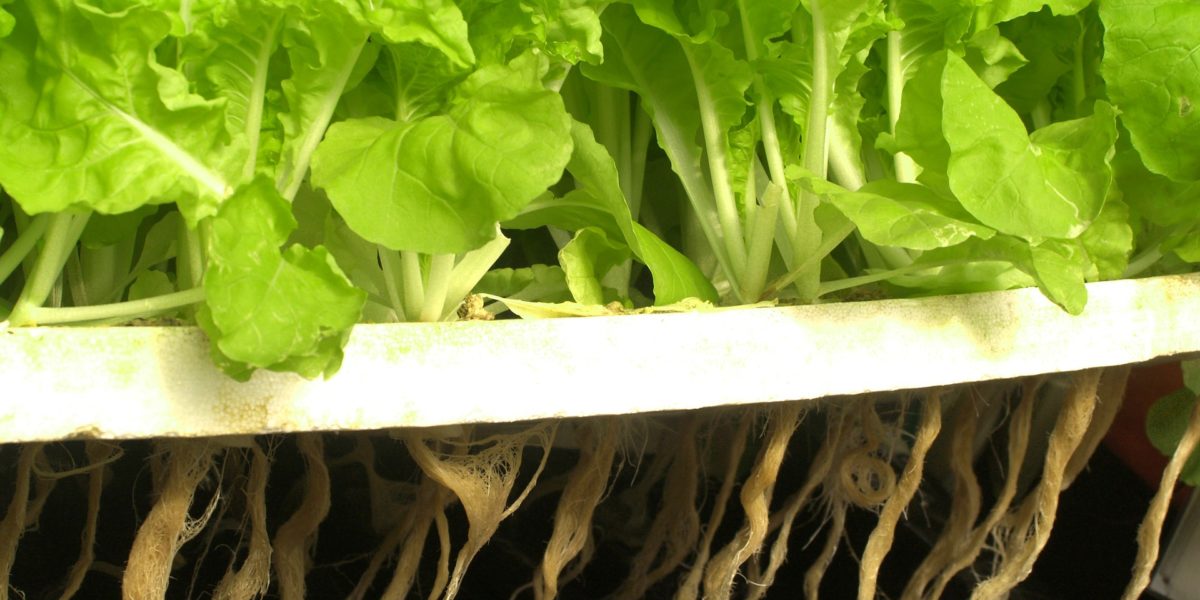
Lettuce is an easy going crop. You don’t have a whole lot to worry about. Unlike other plants to grow in hydroponics, lettuce is more or less vegetative, and doesn’t flower. The foliage (leaves) is the main crop. That makes figuring out nutrient solution easier. You can pretty much use a vegetative nutrient formula the whole way through until harvest. Just keep your EC between 0.8 and 1.2.
We recommend General Hydroponics MaxiGro formula
One problem some hydroponic gardeners have when working with lettuce is highly chlorinated water. For most lettuce varieties, city water with a high chlorine content poses problems (University of Kentucky, 2016). Using distilled and purified water is ideal to avoid harming your plants.
The best water to use is Reverse Osmosis filtered. We recommend the GrowoniX Reverse Osmosis System
Know how to harvest the variety you choose. If you choose a loose lettuce variety, leave some of the leaves to grow back. If you choose tight (head) lettuce, you will take the whole head of lettuce when you harvest. Although head lettuce varieties can be regrown in hydroponics, it takes longer than loose lettuce, and it can be trickier. If you want a consistent harvest with head lettuce, try staggering out your planting cycles.
Start one set of seeds and start another when you transplant the first set. If you do this, and use different varieties, you will have lettuce to harvest without a long wait between crops.
One of the most important aspects about growing lettuce in a hydroponic system is temperature. It’s far better to have a cool grow room than a hot one. Too much heat makes lettuce (and other leafy greens) bolt, rendering them more or less unusable.
Frequently Asked Questions
Can I eat bolted lettuce?
You can eat bolted lettuce. You may not like it, however. When lettuce bolts, it is still safe to eat, but it doesn’t taste particularly good. The leaves are bitter, and the more bolting happens, the more unappetizing they are. If bolting is just starting, you may be able to harvest some of the lettuce before the taste changes too much.
My lettuce bolted! What can I do with it?
There are plenty of things to do with bolted lettuce, even if you do not want it for your salad. For one, you can cut away the foliage and simply regrow your crop. Animal shelters often take donations like bolted lettuce, so call your local shelter to check. Or, you can use the cut plant for composting fertilizer for an outdoor garden. The other option is to simply allow the lettuce to flower and bloom and take the seeds once the plant matures.
Is growing lettuce hydroponically profitable?
A couple factors the ROI for hydroponic lettuce. First, the variety. Next, the scale of the system. While lettuce does grow quickly (especially when you grow hydroponically), to make a profit you have to have a larger system, preferably commercial grade. The variety is important too. While Iceberg lettuce gains higher profit in traditional agriculture, that is not the case in hydroponics. Some of the most profitable lettuce varieties in hydroponics include Romaine, Bibb, and Butterhead.

